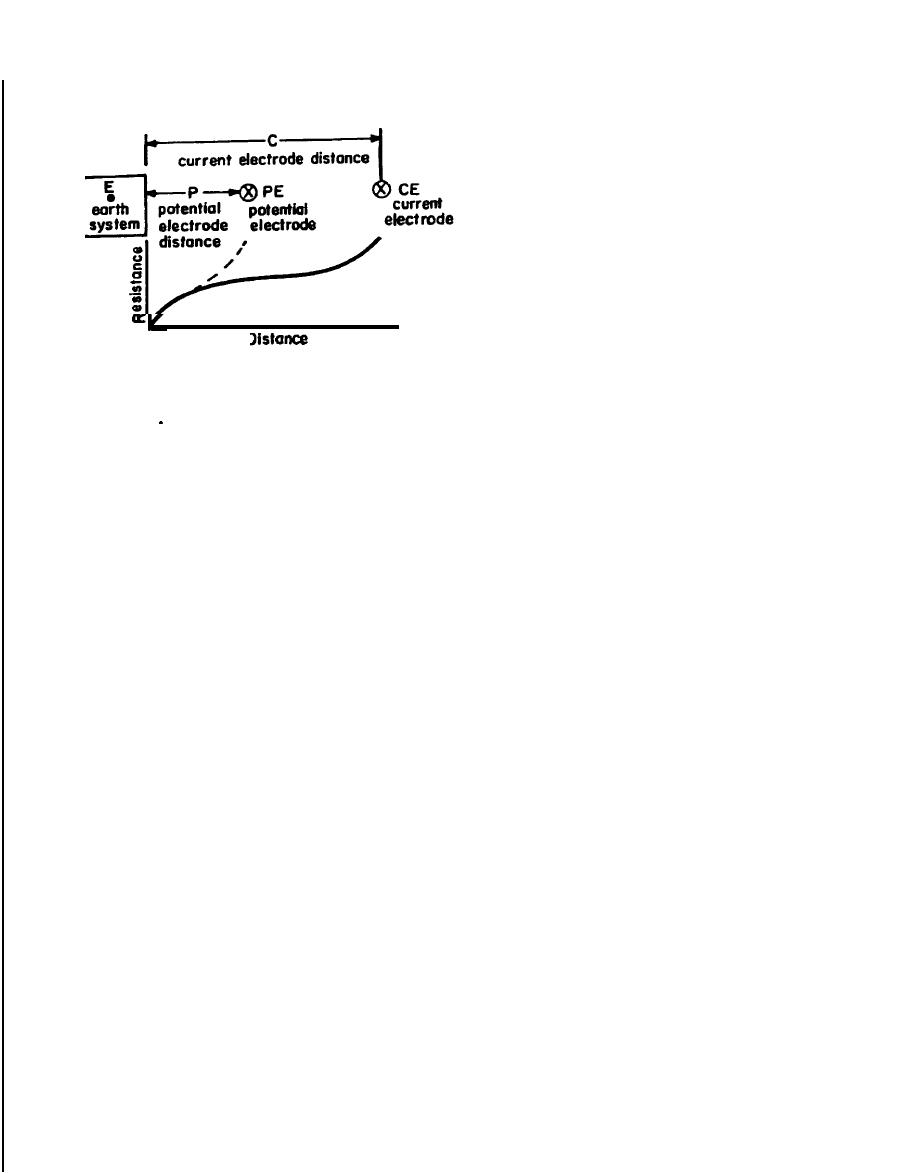

Custom Search
|
|

|
||
 TM 5-683/NAVFAC MO-116/AFJMAN 32-1083
d. The hydrometer must be held vertical such
that the float is free and not in contact with the
sides of the hydrometer barrel.
e. With hydrometer floating freely, read and
record the float scale point at the true liquid level
(fig 14-11). The level at point A is 1.210; at point B,
where the float is lower in the liquid, the reading is
1.183.
14-7. Infrared inspection.
Infrared thermography is the process of making in-
framed radiation visible and measurable. This radia-
tion is emitted by all objects as heat, which is con-
stantly being absorbed and re-emitted by
Figure 14-9. Fall-of-potential method graph.
everything including ourselves. When an electrical
connection is loose or corroded, it is said that the
about 62 percent of the total distance between the
conductor has developed a high resistance connec-
current probe and the system, the earth resistance
tion. A high resistance connection produces heat
should become almost constant. This is the point
which can be detected through infrared ther-
where the earth resistance of the system is most
mography. Loose connections should be tightened
accurate.
and corroded connections cleaned. Cables with poor
14-6. Battery specific gravity test.
insulation should be repaired or replaced. Infrared
Great care should be exercised when sampling and
inspections of electrical equipment help to reduce
handling battery electrolyte. Since it may contain
the number of costly and catastrophic failures and
acid it can cause irritation if it comes in contact
unscheduled shutdowns. Such inspections per-
with the skin, and could cause blindness if it were
formed by qualified and trained personnel on ener-
splashed in the eye. Electrolyte is also a conductor
gized equipment may uncover potentially danger-
and can cause short circuits if splashed over the cell
ous situations. Proper diagnosis and remedial
terminals. When specific gravity of a battery is be-
action have also helped to prevent major losses. The
ing measured, wear acid resistant eye protection,
instruments most suitable for infrared inspections
gloves and apron. It is also available to wear rubber
are of the type that use a scanning technique to
slippers or boots when working with batteries.
produce an image of the equipment being inspected.
When sampling the cells' electrolyte:
These devices display a picture, where the "hot
a. Place a hydrometer tube (or hose) firmly into
spots" appear as bright spots. Infrared surveys may
the mouth of the cell electrolyte withdrawal tube
be performed by military facilities personnel if they
(fig 14-10).
own infrared imaging instruments and adhere to
b. Slowly squeeze the hydrometer bulb so as to
the manufacturer's instructions. Routine infrared
force air into the withdrawal tube, clearing it of
surveys should be performed at the very least every
electrolyte.
year during periods of maximum possible loading.
c. Release hand pressure on the hydrometer bulb
These surveys should be well documented and if
allowing electrolyte to draw up into the glass barrel of
critical, impending faults exist, the electrical super-
the hydrometer. Sufficient electrolyte must be with-
visor should be notified and corrective actions
drawn to allow the hydrometer float to float freely.
taken.
14-7
|
 |
|
 |
||